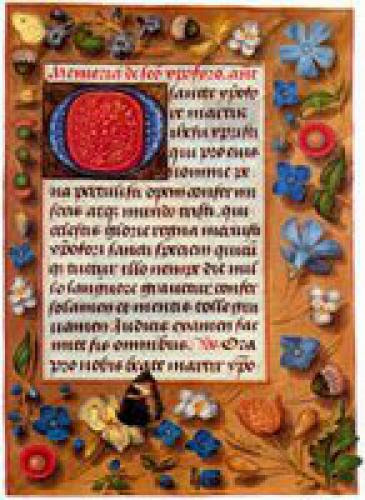
The first thing that must be addressed is the very real presence of Christian symbolism within the Order. There are numerous references to Christ, sometimes in veiled format as Osiris, and the Adeptus Minor grade (and the entire Inner Order of the R.R. et A.C.) are overtly Christian in symbolism. This has been classified by many, including myself, as Rosicrucian and Gnostic, but even the casual observor of either tradition will be aware of its emphasis on the Christ mythos, even if the elements of belief and dogma are very radically different to those of the orthodox Church. However, the symbolism is designed in such a way as to be, like many elements of Gnostic teaching, quite open to interpretation. Thus can a Pagan see a reference to Christ as being one of Osiris, and a Christian can see a reference to Osiris as being one of Christ.
The fact that the three founding members of the Order were avowedly Christian needs to be stressed, as context is a matter essential to all things. Thus, the preliminary form of the Pledge, detailed below, is, without question, quite Christian. Indeed, many of the members who joined the Order were Christian, including some clergy members, some of whom went on to form the Cromlech Temple of the Sun Order, a kind of "side-order", if you will, to the Golden Dawn, limited to only Christian members (given its more mystical focus). Not all members were Christian however. Moina Mathers was a Jew, for example, and a few others would have classified themselves as Pagan. Today there are hundreds of members of G.'.D.'. temples or groups, or just practising solo, who are also Pagan. Indeed, some of them run their own temples as Chiefs or Officers.
The Christian symbolism within the Order is tempered frequently by overtly Pagan symbolism, particularly that of the Egyptian pantheon used extensively throughout the first Order. Some people have classified the Outer Order as Egyptian and the Inner Order as Rosicrucian, which is apt in terms of symbolism used. Jewish symbolism is also utilised frequently, particularly from the Qabalah. But there are other Pagan traditions utilised too, including some elements of the Eleusinian and Samothracian mysteries. Thus, the Pagan will not necessarily feel out of place, for the Golden Dawn is always syncretic, and this includes the multitude of religions too.
The first "Pledge" written for the G.'.D.'., dated 12th February, 1888 and signed by the three founders and the enigmatic "Anna Sprengel" (who remains in my mind a construct of Westcott, even if it was a very necessary one for the time), contains a passage that is quite overt:
"Belief in One God necessary."
That seems to rule out the Pagans, and is in line with Masonic tradition, which has a similar requirement (not limited to Christianity alone, of course, but still limited in some forms).
However, as R.A. Gilbert points out in his Revelations of the Golden Dawn, this was soon changed to:
"Belief in a Supreme Being, or Beings, is indispensable. In addition, the Candidate, if not a Christian, should be at least prepared to take an interest in Christian symbolism."
This is quite a big change, and must have been done on some request by Pagan applicants or members. There is definitely very real Christian symbolism in the Order, particularly in the Inner Order of the R.R. et A.C., as pointed out above, so this allowance for members who believe in "Supreme Beings" (plural) is made with the understanding that such members will not see Christian symbolism as anathema, as is so often the case, particularly in the modern world, whether in Pagan or other circles.
The above Pledge acted as a kind of prototype for the Obligation found in the Neophyte Ceremony, and this is rather explicit on a few matters, the one of interest here being religion, where it states that there is "nothing contrary to your civil, moral or religious duties". Thus, the Golden Dawn is very much not a religion, though it uses religious symbolism to great and varied effect. The oath that is taken stresses this fact, urging members to fulfil whatever religious duties are required of them. The Golden Dawn is, instead, a magical Order, a system of magic, that can, by its syncretic nature, be bent to the needs of many religions, dependant only on the flexibility of the member in question. If that member is flexible in their approach, valuing all religions (as also stressed in the Neophyte Obligation), then the Golden Dawn system is equally, if not more, flexible to meet their magical and spiritual needs.







